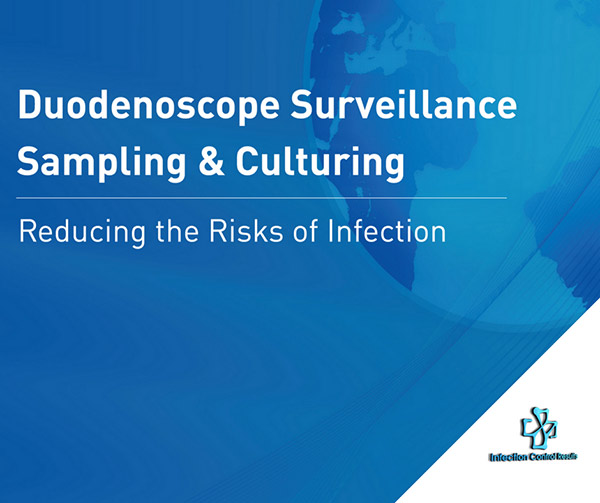
25 May Factors contributing to endoscope contamination after high-level disinfection
Outbreaks related to flexible endoscopes have been in the news repeatedly over the last several decades. Most outbreak investigations concluded that inadequate cleaning, improper high-level disinfection procedures, or problems associated with an automated endoscope reprocessor were responsible for the outbreak. However, the more recent outbreaks of carbapenem-resistant organisms in 2014 and 2015 occurred despite following the manufacturer’s reprocessing instructions and current national guidelines.
A recent study focused on a different aspect of flexible endoscope reprocessing: drying after high-level disinfection. Alcohol flushes and forced air drying of endoscope channels are the accepted final steps of flexible endoscope reprocessing. However, a recent multisite study of 45 endoscopes revealed that these actions may not be sufficient to completely dry various endoscopes. The study included duodenoscopes, colonoscopes, gastroscopes, bronchoscopes, ureteroscopes, endobronchial ultrasound bronchoscopes, endoscopic ultrasound endoscopes, and intubation endoscopes. Flexible endoscopes that had undergone high-level disinfection and stored for >24 hours were cultured and also tested using ATP (adenosine triphosphate) to determine organism contamination levels. Visual inspection of the channels for damage, debris, and moisture was conducted with a borescope. All channels were also tested for water with a sensitive moisture test.
The findings suggest that all aspects of endoscope reprocessing must be strictly adhered to, including drying and storage since the scopes with the highest level of contamination were not dried completely prior to storage. Researchers found that 71% of the endoscopes contained microbial contamination. Multiple infection control breaches were seen at two of the three facilities involved in this study which may have contributed to the high contamination level. However, waterborne pathogens were found in endoscopes at the facility with exemplary processing and drying practices. The authors found that despite filter changes according to the manufacturer’s recommendations, some of the automated endoscope reprocessor filters were discolored and/or contained mold, suggesting that water quality may also play a role in endoscope microbial contamination despite high-level disinfection. This study underscores the importance of strict adherence to all aspects of endoscope reprocessing and questions the best methods for proper endoscope drying.
Based on the information in this study and current guidelines, the best preventive steps to take are:
1) Audit all steps of the reprocessing procedure
2) Perform annual competency assessment of all staff responsible for flexible endoscope reprocessing in all areas of the facility. Consider more frequent competency assessments if high-level disinfection is performed infrequently by any individuals or departments.
3) Periodic surveillance culturing of duodenoscopes as described in the recent guidance published by the Food and Drug Administration (FDA), Centers for Disease Control and Prevention (CDC) and American Society for Microbiology (ASM)
4) Real-time testing after cleaning prior to high level disinfection.
such as ATP or other tests that detect the presence of carbohydrates, proteins, and/or fat
5) Visually inspection of all channels using a borescope to detect retained moisture after processing as well as residual debris and internal channel flaws that may increase contamination due to the inability to properly clean these areas.
